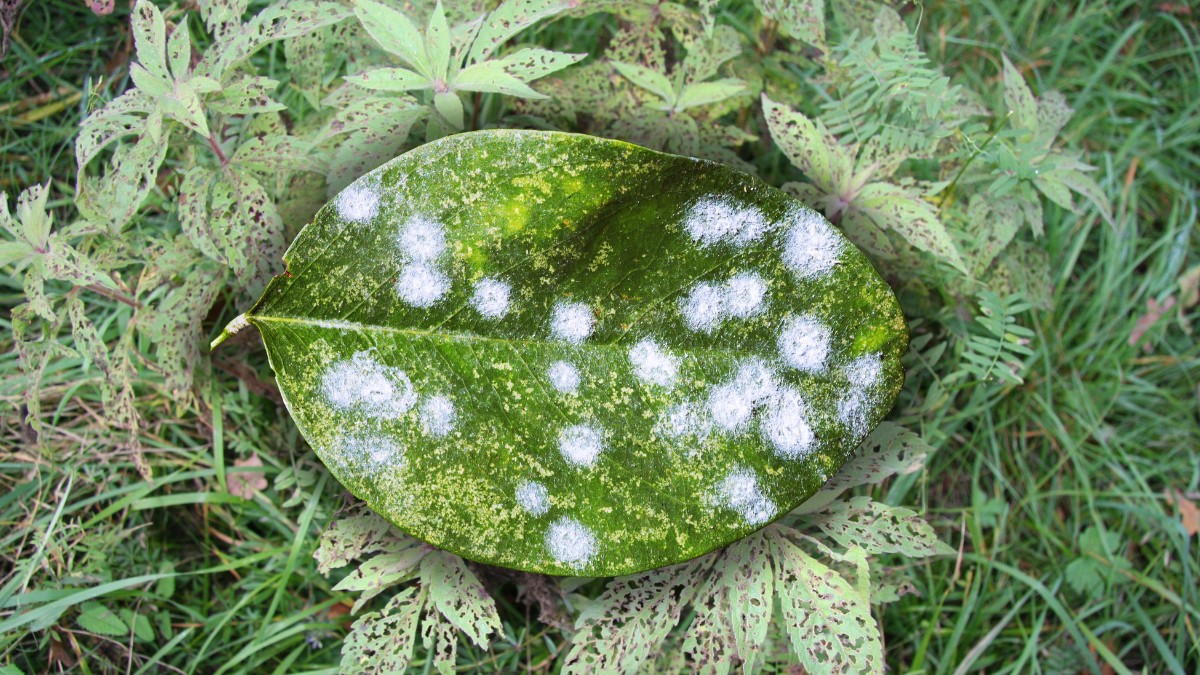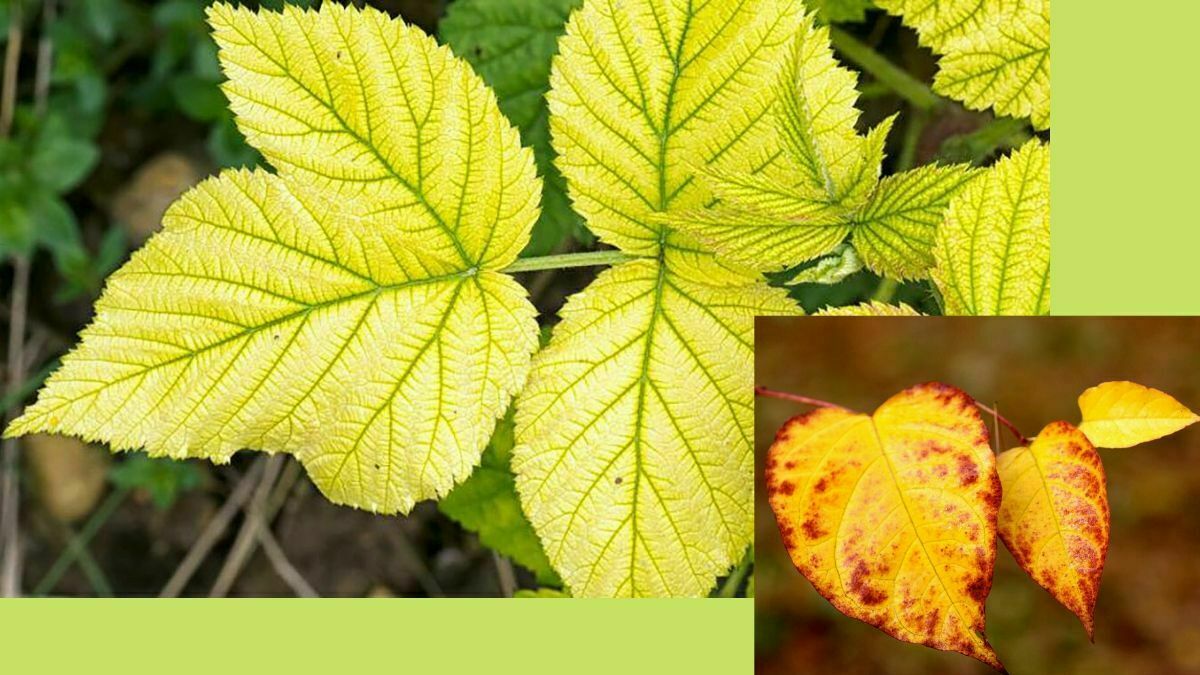Welcome to the green thumb’s survival guide against the most common adversaries lurking in your beloved garden: diseases. This comprehensive guide will help you identify, prevent, and manage the top 30 most common plant diseases that could potentially turn your green oasis into a distressed battleground. Whether you’re a seasoned gardener or a beginner green thumb, this guide provides effective strategies and remedies, particularly focusing on natural control methods, to keep your garden healthy and vibrant. Let’s dive in.
Effective Prevention Strategies for Common Plant Diseases
In this section, we will explore effective prevention strategies that can help gardeners safeguard their plants from common diseases. By implementing these proactive measures, you can maintain the health and vitality of your garden, ensuring thriving plants and bountiful harvests.
Proper Plant Selection and Placement:
One of the fundamental steps in disease prevention is selecting appropriate plant varieties that are resistant or tolerant to common diseases prevalent in your region. Consult with local nurseries or extension services to identify disease-resistant cultivars suitable for your garden. Additionally, consider the specific environmental requirements of each plant and ensure they are placed in suitable locations that promote their overall health and vigor.
Optimal Plant Nutrition and Watering:
Healthy plants are better equipped to resist diseases. Provide your plants with balanced nutrition through proper fertilization, ensuring they receive essential nutrients for their growth and development. Avoid excessive nitrogen fertilization, as it can make plants more susceptible to diseases. Additionally, practice appropriate watering techniques, such as watering at the base of plants and avoiding overhead irrigation, to minimize leaf wetness and reduce the risk of foliar diseases.
Sanitation and Garden Hygiene:
Maintaining a clean and well-maintained garden environment is essential for disease prevention. Regularly remove plant debris, fallen leaves, and other organic matter that can harbor disease-causing pathogens. Properly dispose of infected plant material to prevent the spread of diseases. Disinfect gardening tools, such as pruners, between cuts and between different plants, to avoid transmitting diseases from one plant to another.
Crop Rotation and Companion Planting:
Practicing crop rotation is an effective technique to break disease cycles. Avoid planting susceptible plants in the same area for consecutive seasons, as this can lead to the buildup of pathogens in the soil. Instead, rotate crops with different plant families to disrupt disease progression. Additionally, consider companion planting techniques that promote beneficial interactions between plants, such as planting pest-repellent herbs among susceptible crops.
Beneficial Insects and Natural Predators:
Encouraging a diverse and balanced ecosystem in your garden can help naturally control pests and diseases. Attract beneficial insects like ladybugs, lacewings, and parasitic wasps, which feed on pests and their eggs. Consider planting flowers that provide nectar and pollen to attract these beneficial insects. Creating habitats for natural predators, such as birds and frogs, can also aid in pest and disease control.
These effective prevention strategies, are vital to minimize the risk of common plant diseases and maintain a healthy garden. In the following sections, we will delve deeper into specific prevention methods and natural control measures for some of the most prevalent plant diseases, empowering you with the knowledge to tackle these challenges head-on.
30 Most Common Plant Diseases
| Disease Name | Common in Plants | Temperature | Prevention | Control Method |
| 1. Powdery Mildew | Wide range of plants | Humid, shaded areas, mild temperatures | Good air circulation – Avoid overwatering | Milk spray, Organic fungicides |
| 2. Black Spot | Roses | Warm, wet weather | Remove infected leaves – Use resistant varieties | Baking soda solution, Neem oil |
| 3. Rust | Many plants | Cooler nights, damp foliage | Clean garden – Increase air circulation | Neem oil, Sulfur-based fungicides |
| 4. Leaf Spot | Many plants | Wet conditions | Avoid overhead watering – Space plants for air circulation | Compost tea, Copper fungicide spray |
| 5. Downy Mildew | Many plants | Cool, wet weather | Space plants well – Avoid overwatering | Vinegar and water spray, Organic fungicide |
| 6. Early Blight | Tomatoes, Potatoes | Warm, wet periods | Rotate crops – Mulch around plants | Organic copper sprays |
| 7. Late Blight | Tomatoes, Potatoes | Cool, wet conditions | Disease-free seeds/plants – Avoid overhead watering | Copper-based fungicides |
| 8. Fire Blight | Fruit trees, Ornamental plants | Warm, humid conditions, spring/summer | Prune infected branches – Use resistant varieties | Organic antibacterial spray |
| 9. Clubroot | Brassica plants | Acidic, moist soil | Adjust soil pH – Ensure good drainage | – |
| 10. Fusarium Wilt | Many types of plants | Warm soil | Crop rotation – Use disease-free seeds/plants | – |
| 11. Anthracnose | Many plants | Warm, humid conditions | Prune and dispose of infected parts – Good air circulation | Neem oil, Baking soda spray |
| 12. Bacterial Leaf Spot | Many plants | Warm, wet weather | Prune affected areas – Keep foliage dry | Copper-based sprays |
| 13. Root Rot | Many plants | Overly wet soil | Avoid overwatering – Good soil drainage | Biological fungicides |
| 14. Damping Off | Seedlings | Cool, wet conditions | Use sterile potting soil – Avoid overcrowding | Chamomile tea |
| 15. Septoria Leaf Spot | Tomatoes | Wet, warm conditions | Remove infected leaves – Avoid overhead watering | Baking soda solution, Sulfur sprays |
| 16. Canker Diseases | Many plants | Variable | Avoid wounds to plants – Keep plants healthy | – |
| 17. Cottony Cushion Scale | Many plants | Variable | Regularly monitor plants | Release natural predators, Horticultural oil sprays |
| 18. Crown Gall | Many plants | Variable | Avoid plant injuries | – |
| 19. Botrytis Blight (Gray Mold) | Many plants | Humid conditions | Good air circulation – Avoid wetting foliage | Organic fungicides |
| 20. Mosaic Virus | Many plants | Variable | Sanitize tools – Control aphids and pests | – |
| 21. Southern Blight | Wide range of plants | Hot, humid conditions | Solarize soil – Rotate crops | |
| 22. Sooty Mold | Many plants | Variable | Control insects causing it | Insecticidal soap, Beneficial |
| 23. Blossom End Rot | Tomatoes, Peppers, Squash | Variable | Consistent moisture – Lime to increase calcium | Calcium sprays |
| 24. Peach Leaf Curl | Peach, Nectarine | Cool, wet spring weather | Apply fungicide after leaf drop and before bud break | Remove and destroy infected leaves |
| 25. Verticillium Wilt | Many plants | Warm weather | Crop rotation – Use resistant varieties | Solarize soil (severe cases) |
1. Powdery Mildew and Effective Prevention Methods
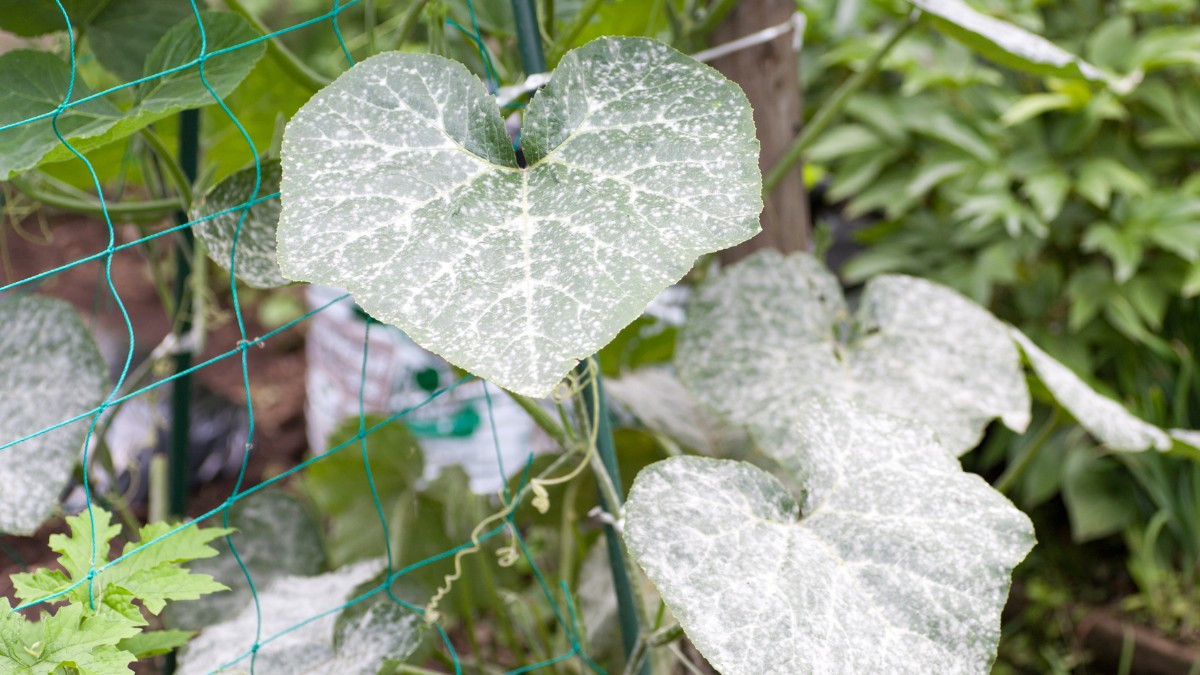
Powdery mildew is a common fungal disease that affects plants, characterized by the presence of white or grey powdery spots on the leaves, stems, and buds. It tends to thrive in shaded and humid environments, making it particularly prevalent during late spring to early summer. In this article, we will delve deeper into the nature of powdery mildew and explore effective prevention methods.
1. Causes and Characteristics of Powdery Mildew:
Powdery mildew is caused by various species of fungi belonging to the Erysiphales order. These fungi infect plants and create a powdery white or grey fungal growth on the plant’s surfaces. The spots can be observed on leaves, stems, and buds, and they often spread rapidly if left untreated.
2. Environmental Factors:
Powdery mildew thrives in specific environmental conditions. Shaded areas with limited air circulation provide an ideal environment for the disease to develop. Additionally, high humidity levels contribute to its growth. These factors explain why powdery mildew is commonly observed in densely planted areas and during periods of warm, humid weather.
3. Prevention Methods:
Preventing powdery mildew is crucial to maintain the health and vitality of your plants. Here are some effective prevention methods to consider:
a. Good Air Circulation:
Ensure adequate spacing between plants to promote air circulation. Prune overcrowded branches and foliage to increase airflow within the plant canopy. This helps reduce humidity levels and create an unfavorable environment for powdery mildew to thrive.
b. Avoid Overwatering:
Overwatering can create a damp environment that favors the growth of powdery mildew. Instead, practice proper watering techniques such as watering at the base of the plant and allowing the soil to dry between waterings. This helps maintain optimal moisture levels and reduces the risk of fungal infections.
c. Natural Remedies:
A milk spray is a well-known natural deterrent for powdery mildew. Mix one part milk with nine parts water and spray the solution on the affected plants. The proteins in milk have antifungal properties that can help control the spread of powdery mildew. Additionally, there are commercially available organic fungicides specifically designed to combat powdery mildew.
Powdery mildew is a fungal disease that can significantly impact the health and aesthetics of plants. Understanding its causes and implementing preventive measures is essential for maintaining plant vitality. By ensuring good air circulation, avoiding overwatering, and considering natural remedies or organic fungicides, you can effectively prevent and manage powdery mildew infestations.
2. Black Spot
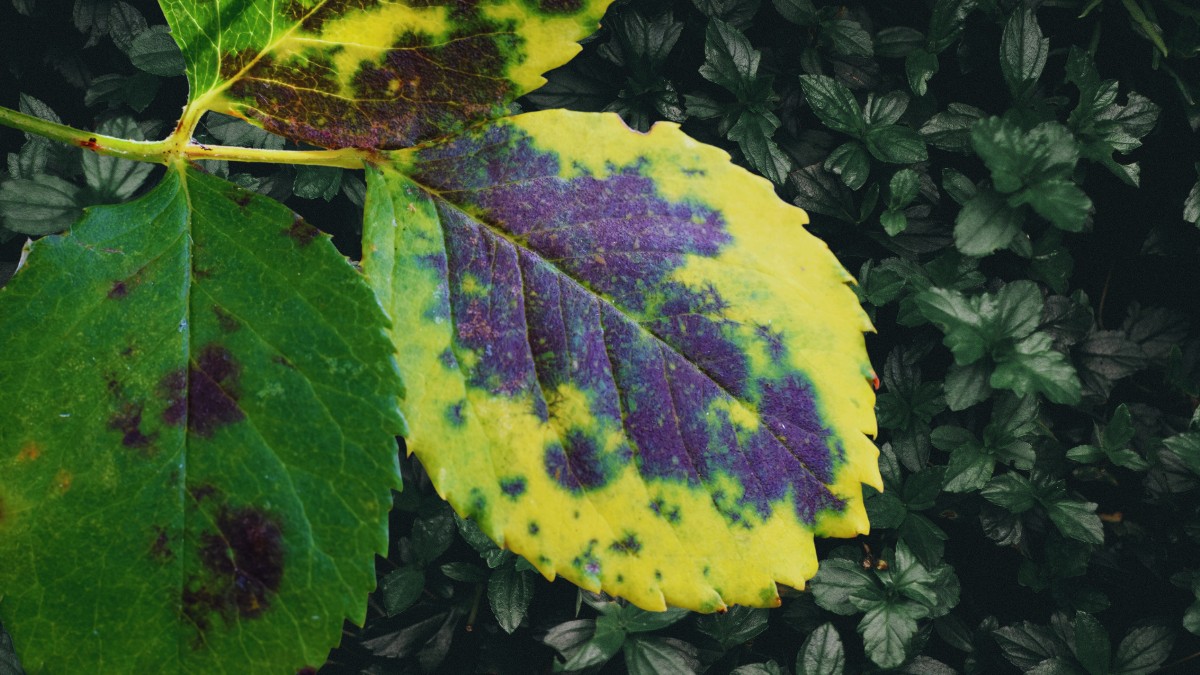
Found primarily on roses, the black spot appears as black spots surrounded by yellow areas on leaves. It’s more prevalent in warm, wet weather. Remove infected leaves and use resistant plant varieties for prevention. Natural control can be achieved using a baking soda and water solution or neem oil.
3. Rust: Identifying and Preventing Rust Diseases in Plants
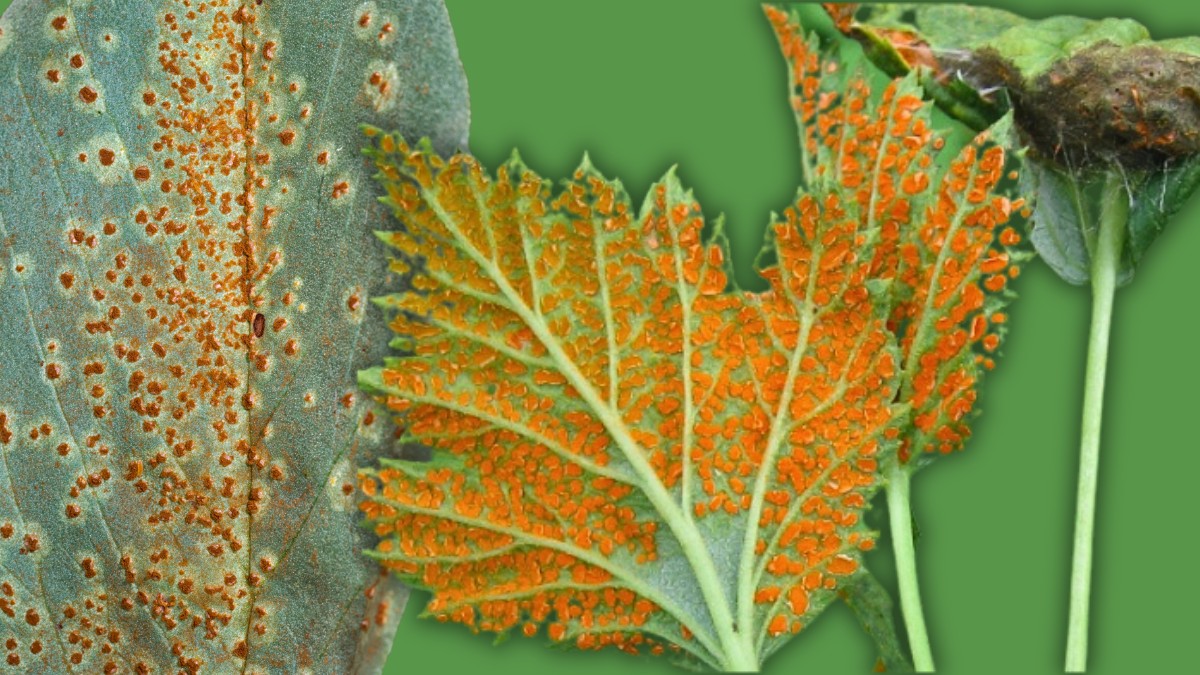
Rust diseases are a common issue that affects plants, presenting as orange or red rust-like spots primarily found on the underside of leaves. This article aims to provide insights into rust diseases, their causes, and effective prevention methods to maintain plant health.
1. Characteristics and Occurrence of Rust Diseases:
Rust diseases are caused by fungal pathogens that belong to the Pucciniales order. These fungi create distinctive rust-like spots on leaves, appearing as powdery pustules that may vary in color, ranging from orange to red. Rust diseases tend to occur during late summer or fall when cooler nights and frequent dampness contribute to their development.
2. Environmental Factors:
The development of rust diseases is heavily influenced by environmental conditions. Cool nights and high humidity levels create an ideal habitat for the growth and spread of rust fungi. Additionally, dense plantings and limited air circulation further facilitate the proliferation of these diseases.
3. Prevention Methods:
Implementing preventive measures is crucial to mitigate the impact of rust diseases. Here are some effective strategies to consider:
a. Garden Hygiene:
Maintaining a clean garden environment is essential to prevent the spread of rust diseases. Remove and destroy any infected plant material promptly. This helps eliminate potential sources of spores that can reinfect other plants.
b. Increase Air Circulation:
Optimal air circulation is vital to reduce humidity levels and create an unfavorable environment for rust diseases. Proper spacing between plants and regular pruning of dense foliage promote airflow, preventing the accumulation of moisture and inhibiting the growth of rust fungi.
c. Natural Remedies:
Natural treatments can be employed to manage rust diseases. Neem oil, derived from the neem tree, has fungicidal properties that can help control rust. Apply neem oil according to the manufacturer’s instructions. Sulfur-based fungicides are also effective against rust diseases and can be used as a preventive measure or as a treatment for infected plants.
Rust diseases pose a significant threat to the health and appearance of plants, but with proper understanding and preventive measures, their impact can be minimized. By focusing on garden hygiene, enhancing air circulation, and utilizing natural remedies such as neem oil or sulfur-based fungicides, you can effectively prevent and manage rust diseases. Regular monitoring and prompt action are key to maintaining the vitality of your plants and ensuring a thriving garden.
4. Leaf Spot: Understanding Leaf Spot Diseases and Effective Prevention Methods
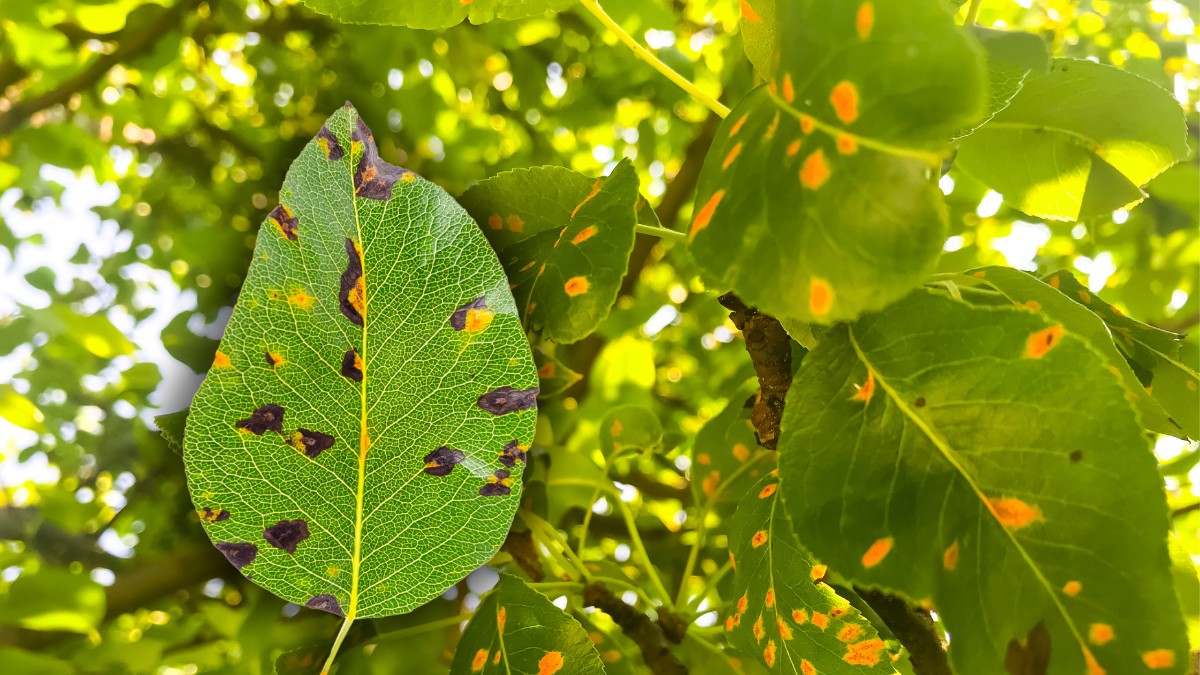
Leaf spot diseases, caused by fungi or bacteria, can have a detrimental impact on the health and appearance of plants. This article aims to provide insights into leaf spot diseases, their characteristics, and practical prevention methods to mitigate their effects.
1. Characteristics and Causes of Leaf Spot Diseases:
Leaf spot diseases are characterized by the presence of brown, black, or tan spots on the leaves of plants. These spots may vary in size and shape, depending on the specific pathogen causing the disease. Fungi and bacteria are the primary culprits responsible for leaf spot diseases. They typically thrive in wet conditions, making these diseases more prevalent during periods of high humidity or excessive rainfall.
2. Environmental Factors:
Moisture is a critical factor in the development and spread of leaf spot diseases. Overhead watering, especially during wet conditions, can create an ideal environment for fungi and bacteria to thrive. Insufficient air circulation due to dense plantings can also contribute to the onset and progression of leaf spot diseases.
3. Prevention Methods:
Implementing preventive measures is essential to minimize the occurrence and impact of leaf spot diseases. Here are some effective strategies to consider:
a. Watering Practices:
Avoid overhead watering as much as possible, as it increases leaf moisture and promotes the growth of pathogens. Instead, water plants at the base to minimize leaf wetness. This helps create an unfavorable environment for the development of leaf spot diseases.
b. Adequate Spacing:
Provide sufficient spacing between plants to allow for proper air circulation. This facilitates the drying of foliage and reduces humidity levels, making it harder for pathogens to establish and spread.
c. Natural Remedies:
Compost tea, a nutrient-rich liquid fertilizer made from compost, can help strengthen plants’ natural defense mechanisms against leaf spot diseases. Apply compost tea to the soil around the base of plants as a preventive measure. Copper fungicide spray, which contains copper-based compounds, is also effective in controlling leaf spot diseases. Follow the product instructions carefully when using any fungicide.
Leaf spot diseases caused by fungi or bacteria can significantly impact plant health and aesthetics. By understanding their causes and implementing preventive measures, you can effectively minimize the occurrence and spread of these diseases. Avoiding overhead watering, ensuring adequate spacing, and considering natural remedies such as compost tea or copper fungicide spray are practical strategies for preventing leaf spot diseases. By prioritizing plant health and maintaining a favorable growing environment, you can cultivate thriving plants with minimal risk of leaf spot diseases.
5. Downy Mildew: Understanding Downy Mildew and Effective Prevention Methods
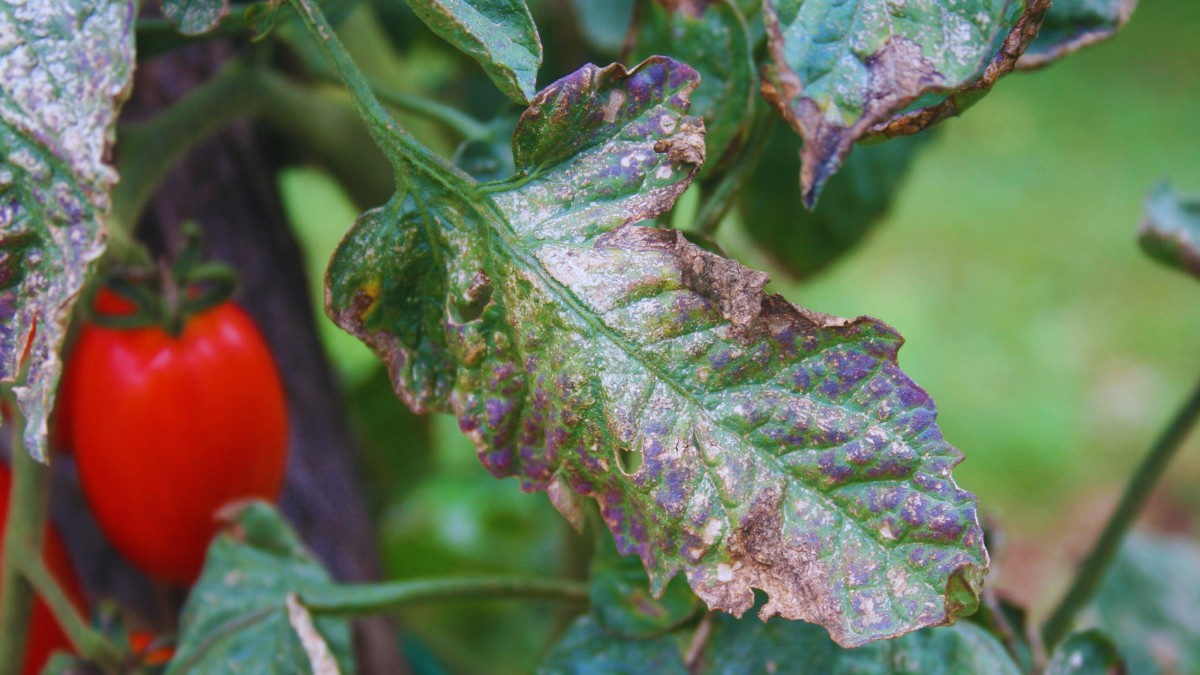
Downy mildew is a fungal disease that can have a detrimental impact on plants, characterized by the presence of fluffy white patches on the undersides of leaves. This article aims to provide insights into downy mildew, its characteristics, and practical prevention methods to mitigate its effects.
1. Characteristics of Downy Mildew:
Downy mildew manifests as fluffy white patches primarily found on the undersides of leaves. These patches may vary in size and spread rapidly if left untreated. The disease is caused by various species of fungi, and it tends to be more prevalent in cool, wet weather conditions.
2. Environmental Factors:
Downy mildew thrives in cool and moist environments. It is commonly observed during periods of high humidity or excessive rainfall. Dense plantings, poor air circulation, and overwatering contribute to the development and spread of downy mildew.
3. Prevention Methods:
Implementing preventive measures is crucial to minimize the occurrence and impact of downy mildew. Here are some effective strategies to consider:
a. Spacing and Pruning:
Ensure plants are adequately spaced to promote air circulation and reduce humidity levels. Proper spacing helps prevent the spread of downy mildew and creates an unfavorable environment for fungal growth. Regular pruning of dense foliage can also aid in improving air circulation.
b. Watering Practices:
Avoid overwatering, as excess moisture creates a favorable habitat for downy mildew. Water plants at the base to minimize leaf wetness. Allow the soil to dry between waterings, as this helps maintain optimal moisture levels and reduces the risk of fungal infections.
c. Natural Remedies:
Consider using natural control methods to manage downy mildew. A homemade spray of vinegar and water can be effective in combating the disease. Mix one part vinegar with three parts water and spray the solution on the affected plants. Additionally, commercially available organic fungicides specifically designed to control downy mildew can be used according to the product instructions.
Downy mildew, characterized by fluffy white patches on the undersides of leaves, can negatively impact plant health. By understanding its characteristics and implementing preventive measures, you can effectively minimize the occurrence and spread of this fungal disease. Prioritizing proper spacing, avoiding overwatering, and considering natural control methods such as vinegar and water spray or organic fungicides can help prevent and manage downy mildew. Regular monitoring and prompt action are essential for maintaining the vitality of your plants and ensuring a thriving garden.
6. Early Blight: Understanding Early Blight and Effective Prevention Methods
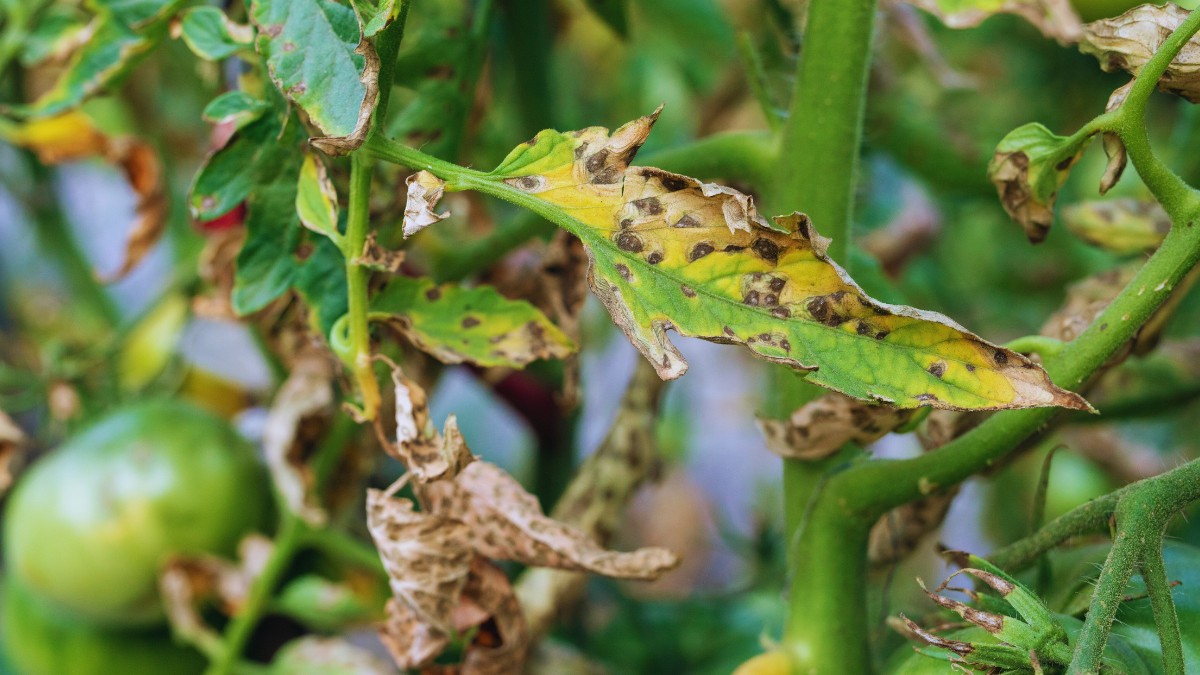
Early blight is a common fungal disease that primarily affects tomatoes and potatoes. It is characterized by the presence of dark spots with concentric rings on the older leaves of these plants. This article aims to provide insights into early blight, its characteristics, and practical prevention methods to mitigate its effects.
1. Characteristics and Host Plants:
Early blight is caused by the fungal pathogen Alternaria solani and primarily affects tomatoes and potatoes. The disease presents as dark spots with concentric rings on the older leaves of the plants. Over time, the spots may enlarge and cause the leaves to wither and die. Early blight is more likely to occur during wet and warm periods, providing optimal conditions for the fungal growth and development.
2. Environmental Factors:
Environmental conditions play a significant role in the development and spread of early blight. Wet and warm weather, along with high humidity, creates an ideal environment for the fungal pathogen to thrive. Overhead watering and prolonged leaf wetness further contribute to the disease’s progression.
3. Prevention Methods:
Implementing preventive measures is crucial to minimize the occurrence and impact of early blight. Here are some effective strategies to consider:
a. Crop Rotation:
Practice crop rotation by avoiding planting tomatoes and potatoes in the same location for consecutive years. This helps disrupt the disease’s life cycle and reduces the buildup of fungal spores in the soil.
b. Mulching:
Apply a layer of organic mulch, such as straw or wood chips, around the base of the plants. Mulching helps prevent soil splashback onto the leaves, reducing the chances of the fungal spores reaching the plants and causing early blight.
c. Natural Control Methods:
Consider using organic copper sprays as a natural management option for early blight. Copper-based fungicides can be applied according to the manufacturer’s instructions to help control the spread of the disease. Ensure proper coverage of the foliage, especially targeting the lower leaves where early blight tends to first appear.
Early blight poses a significant threat to tomatoes and potatoes, impacting their health and productivity. By understanding its characteristics and implementing preventive measures, you can effectively minimize the occurrence and spread of this fungal disease. Crop rotation, mulching, and the use of organic copper sprays are practical strategies for preventing and managing early blight. Regular monitoring, prompt action, and maintaining a favorable growing environment are key to preserving the vitality of your plants and ensuring a successful harvest.
7. Late Blight: Understanding Late Blight and Effective Prevention Methods
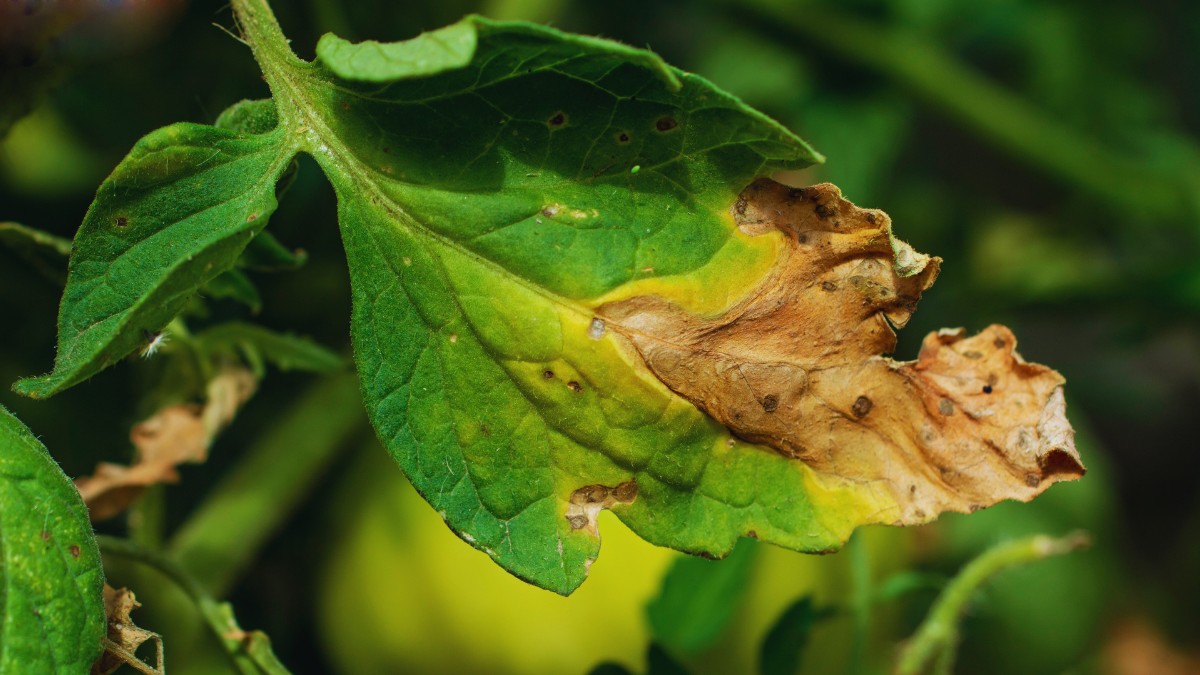
Late blight is a destructive fungal disease that affects potatoes and tomatoes. It is characterized by the appearance of water-soaked spots that later turn brown and papery. Late blight thrives in cool, wet conditions and can quickly devastate entire crops. This article aims to provide insights into late blight, its characteristics, and practical prevention methods to mitigate its effects.
1. Characteristics and Host Plants:
Late blight is caused by the fungal pathogen Phytophthora infestans and primarily affects potatoes and tomatoes. The disease manifests as water-soaked spots on the leaves, stems, and fruits of the plants. These spots eventually turn brown and develop a papery texture. Late blight is most prevalent in cool and wet conditions, particularly during periods of high humidity.
2. Environmental Factors:
Late blight thrives in cool, moist environments. It spreads rapidly during cool temperatures (50-70°F or 10-21°C) and high humidity, making it a significant threat to potato and tomato crops. Overhead watering and prolonged leaf wetness facilitate the spread of the pathogen, increasing the severity of the disease.
3. Prevention Methods:
Implementing preventive measures is crucial to minimize the occurrence and impact of late blight. Here are some effective strategies to consider:
a. Disease-Free Seeds or Plants:
Start with disease-free seeds or plants from reputable sources. This helps minimize the introduction of late blight into your garden or field. Proper inspection and selection of healthy plant material are vital in preventing the initial infection.
b. Avoid Overhead Watering:
To reduce leaf wetness and minimize the chances of late blight development, avoid overhead watering. Instead, water the plants at the base, directing the water towards the soil. This method helps keep the foliage dry and prevents the splashing of spores.
c. Natural Control Methods:
Copper-based fungicides can be used as a natural control measure for late blight. Apply the fungicide according to the manufacturer’s instructions, ensuring thorough coverage of the foliage. Copper-based sprays can help inhibit the growth and spread of the pathogen.
Late blight is a destructive disease that poses a severe threat to potato and tomato crops. By understanding its characteristics and implementing preventive measures, you can effectively minimize the occurrence and spread of this fungal disease. Using disease-free seeds or plants, avoiding overhead watering, and employing natural control methods such as copper-based fungicides are practical strategies for preventing and managing late blight. Regular monitoring, prompt action, and maintaining optimal growing conditions are essential for protecting the health and productivity of your crops.
8. Fire Blight
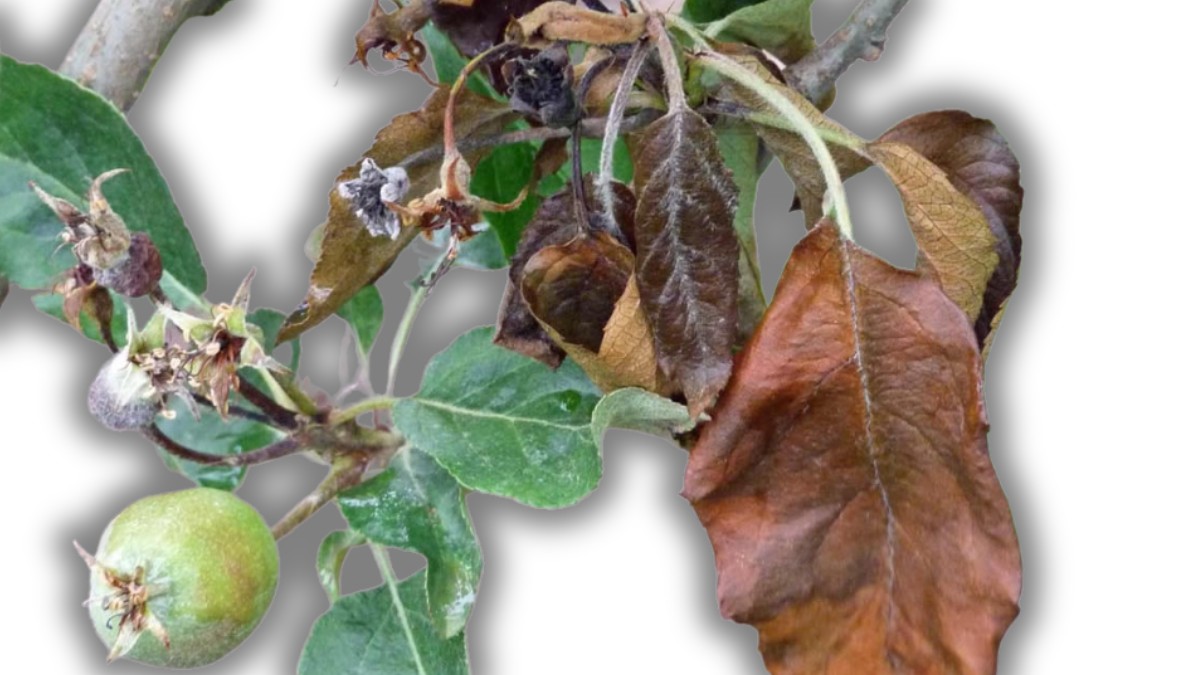
Fire blight is a bacterial disease that primarily affects fruit trees and ornamental plants. The symptoms include wilting, blackening, and a ‘burned’ look to the leaves, flowers, and shoots.
Fire blight is most common during the spring and summer when conditions are warm and humid. The warm, moist conditions enable the bacteria to spread from infected plants to healthy ones.
The disease is caused by the bacteria Erwinia amylovora. Once a plant is infected, the bacteria spread through the tissue until it blocks the plant’s vascular system, restricting water and nutrient transport. This leads to the telltale wilting, blackened tissues, and shoot dieback.
To manage fire blight:
Prune out infected and dead branches during winter when the bacteria are dormant. Use sterilized pruners to avoid spreading the bacteria to other plants.
Consider planting fire blight-resistant varieties of fruit trees and ornamentals when possible. Ask your local nursery for recommendations.
Apply an organic antibacterial spray containing streptomycin or copper. Spray the dormant plants in early spring before new growth emerges and again once new shoots form. Follow the product label instructions for concentration and frequency of application.
Monitor plants closely during spring and summer for early symptoms of fire blight. Remove and destroy severely infected branches to contain the spread. Fire blight spreads quickly, so early detection and pruning are critical.
With annual management, fire blight can be prevented from becoming a serious, destructive disease for your fruit trees and ornamentals. Regular pruning, resistant plant varieties, and organic sprays work together to keep the bacteria at bay.
9. Clubroot
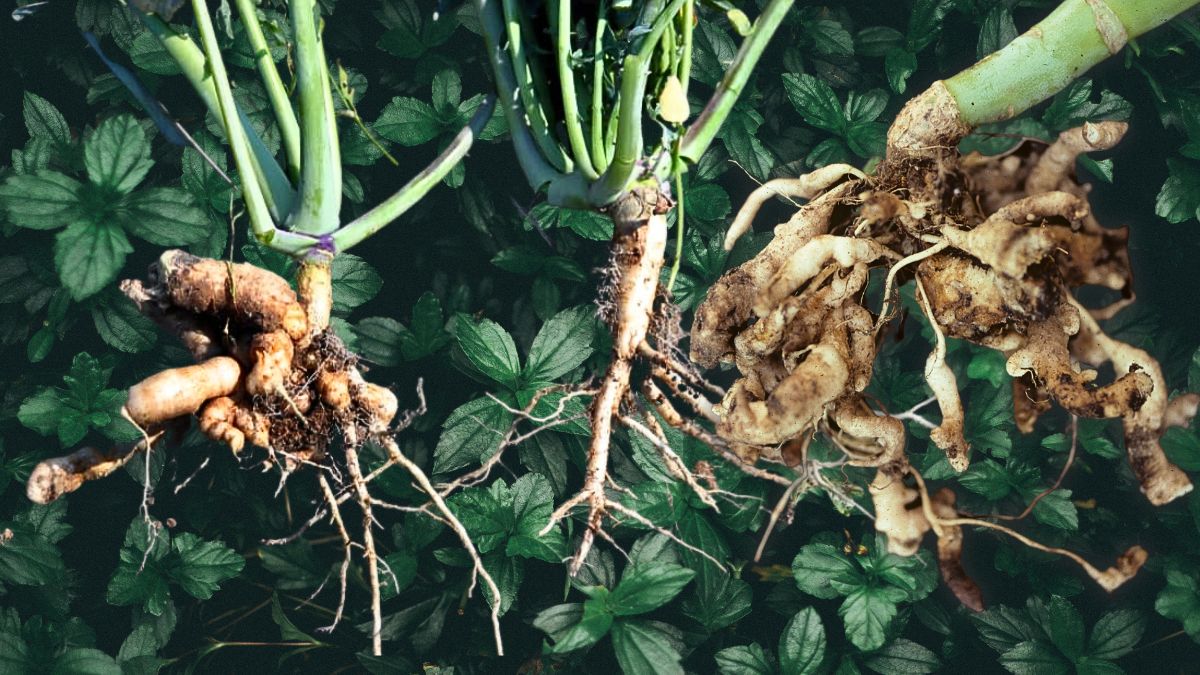
Clubroot is a serious soilborne disease that primarily affects plants in the brassica family, such as broccoli, cabbage, cauliflower, kale, radish, and turnips.
The disease causes swollen, distorted roots that are club-shaped. Infected plants show symptoms of wilting, stunted growth, and chlorosis due to reduced water and nutrient absorption. Severely infected plants may die prematurely.
Clubroot is caused by the soil fungus Plasmodiophora brassicae. The fungus releases spores that infect small root hairs on brassica plant roots. The infection then spreads within the root tissue, causing deformation and galls to form.
Clubroot thrives in cool, wet conditions with acidic soil pH levels below 6.5. Moist soil allows the spores to spread between host plants.
To prevent clubroot:
- Adjust soil pH to neutral or slightly alkaline (above 7) to inhibit the fungus. Apply lime to raise soil pH.
- Improve soil drainage to reduce moisture levels. Add organic matter and aerate compacted soil.
- Rotate brassica crops with non-host crops for at least 4 years to break the disease cycle.
- Plant clubroot-resistant varieties of brassicas when available. Ask your seed supplier for resistant options.
Once clubroot infects the soil, it is difficult to completely eliminate. The spores can survive in the soil for over 10 years. Therefore, the best control methods focus on prevention and using resistant varieties.
With good crop rotation, adjusted soil pH, improved drainage, and resistant varieties, you can significantly reduce the impact of clubroot on your brassica plants. Regular scouting for symptoms and removing severely infected plants also helps minimize soil contamination.
Does this revised version cover the main points about clubroot in a more organized way with more details? Let me know if you would like me to modify or expand anything further.
10. Fusarium Wilt
This soil-borne fungus affects many types of plants, causing yellowing, wilting, and browning of the vascular tissue. It’s most active in warm soil. Crop rotation and using disease-free seeds or plants are key prevention methods. Unfortunately, there’s no effective natural remedy for Fusarium wilt once a plant is infected, so prevention is crucial.
11. Anthracnose
Anthracnose is a group of fungal diseases that causes dark, sunken lesions on leaves, stems, flowers, and fruits. It thrives in warm, humid conditions. To prevent, regularly prune and dispose of infected plant parts and ensure good air circulation. For natural control, use neem oil or a baking soda spray.
12. Bacterial Leaf Spot
These small, water-soaked spots can eventually grow larger and darken, usually appearing in warm, wet weather. Copper-based sprays can provide control and should be applied as soon as the disease is identified. Prune affected areas and water in a way that keeps the foliage dry to prevent the disease.
13. Root Rot
Root rot, often caused by overly wet soil, leads to discolored, wilting, and dying plants. To prevent it, avoid overwatering and ensure your soil drains well. Biological fungicides, such as those containing Trichoderma or Bacillus species, can offer natural control.
14. Damping Off
Damping off affects seedlings, causing them to collapse, wither, and die. The disease is typically a problem in cool, wet conditions. To prevent it, use sterile potting soil and avoid overcrowding. Chamomile tea is a well-known natural remedy, used to water seedlings and provide antifungal protection.
15. Septoria Leaf Spot
This fungal disease affects tomatoes, causing yellow and brown spots on the lower leaves after the first fruit sets. It’s common in wet, warm conditions. Remove and dispose of infected leaves, and avoid overhead watering to prevent it. Applying a baking soda solution or sulfur sprays can help to control it naturally.
16. Canker Diseases
Canker diseases can cause branches or the entire plant to die and are usually caused by various types of fungi. Infected areas should be pruned off and destroyed, with pruning tools disinfected between cuts. Prevention involves keeping plants healthy and avoiding wounds to the plants, which can happen during pruning or other garden activities.
17. Cottony Cushion Scale
This garden pest might not be a disease, but it behaves like one. Cottony cushion scale insects suck the sap from plants, weakening them and causing leaf drop. The insects appear as small, cottony blobs on plants. Control methods include releasing natural predators, such as ladybugs and lacewings. Horticultural oil sprays can also be effective.
18. Crown Gall
Crown gall is a bacterial disease that causes swollen, tumor-like growths on the plant’s crown, stems, or branches. It often enters plants through wounds, so avoiding plant injuries can prevent the disease. Once a plant is infected, there’s no effective treatment, so it’s best to remove and destroy the infected plant to avoid spreading.
19. Botrytis Blight (Gray Mold)
This fungus causes wilting, spotting, and a fuzzy gray mold on plants, particularly those in humid conditions. Ensuring good air circulation, avoiding wetting the foliage, and removing infected plant parts can prevent gray mold. Organic fungicides that contain Bacillus subtilis can be used for natural control.
20. Mosaic Virus
This virus causes mottled, discolored, and distorted leaves. There’s no cure for mosaic virus, and it’s spread by insects or by tools. Therefore, prevention is key. Regularly sanitize your garden tools, use resistant plant varieties, and control aphids and other pests to prevent the virus. Remove and destroy infected plants immediately to prevent spread.
21. Southern Blight
This soil-borne fungus affects a wide range of plants, causing wilting, yellowing, and a white cottony growth at the base of the plant. It’s most common in hot, humid conditions. Solarizing the soil and rotating crops can prevent Southern blight. If the disease appears, remove and destroy infected plants, including the roots.
22. Sooty Mold
This fungus isn’t harmful on its own but indicates an infestation of aphids, scale, or other sap-sucking insects. The fungus grows on the honeydew these insects produce, leading to black, soot-like spots on leaves. Controlling the insects will usually control the sooty mold. Use insecticidal soap or introduce beneficial insects like ladybugs to naturally control these pests.
23. Blossom End Rot
This disorder affects tomatoes, peppers, and squash, causing a dark, sunken area on the fruit’s blossom end. It’s caused by calcium deficiency and irregular watering. Prevent it by providing consistent moisture and adding lime to the soil to increase calcium levels. Using calcium sprays when the first fruits form can also help.
24. Peach Leaf Curl
This fungal disease causes distortion, discoloration, and a blister-like appearance on peach and nectarine leaves. It’s most common in cool, wet spring weather. To prevent it, apply a lime sulfur or copper-based fungicide after leaf drop in fall and before bud break in spring. Remove and destroy infected leaves to limit the disease’s spread.
25. Verticillium Wilt
This soil-borne disease causes plants to wilt and yellow, most commonly in warm weather. Crop rotation and the use of resistant varieties are the best prevention strategies. There’s no effective natural remedy for this disease once a plant is infected, so prevention is paramount. In severe cases, solarizing the soil can help to reduce the disease’s impact.
Conclusion
Understanding the signs of plant diseases and the steps to prevent them can make a huge difference in maintaining a healthy garden. Many of these diseases can be prevented or controlled using simple natural methods and practicing good garden hygiene. However, every garden is unique, and what works for one may not work for another. So, experiment with different strategies, observe your plants closely, and find what works best for your green haven. Happy gardening!
